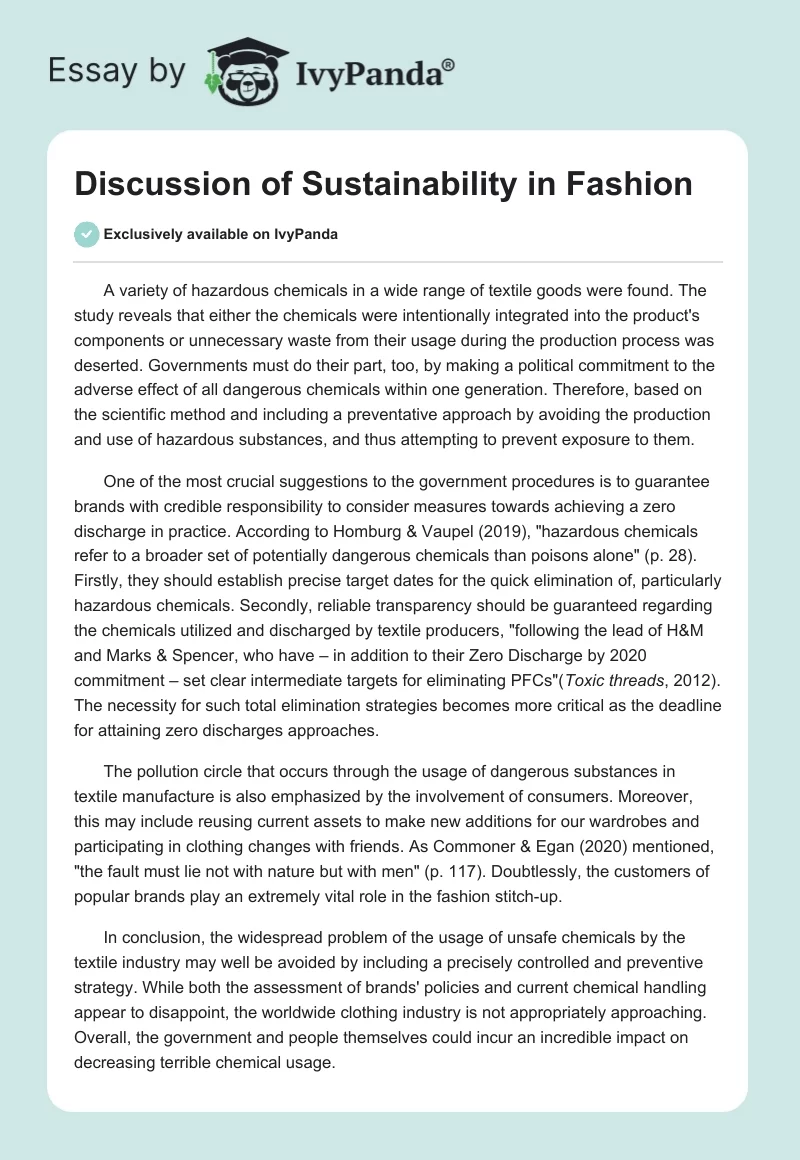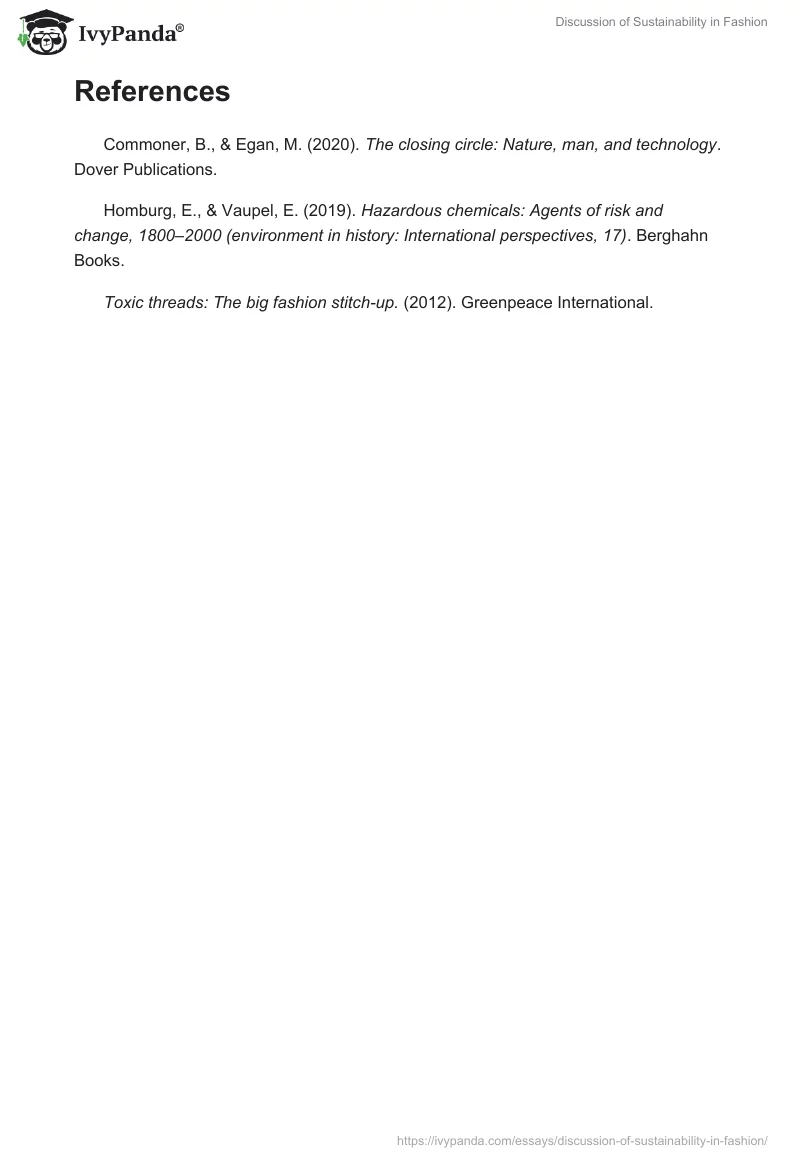A variety of hazardous chemicals in a wide range of textile goods were found. The study reveals that either the chemicals were intentionally integrated into the product’s components or unnecessary waste from their usage during the production process was deserted. Governments must do their part, too, by making a political commitment to the adverse effect of all dangerous chemicals within one generation. Therefore, based on the scientific method and including a preventative approach by avoiding the production and use of hazardous substances, and thus attempting to prevent exposure to them.
One of the most crucial suggestions to the government procedures is to guarantee brands with credible responsibility to consider measures towards achieving a zero discharge in practice. According to Homburg & Vaupel (2019), “hazardous chemicals refer to a broader set of potentially dangerous chemicals than poisons alone” (p. 28). Firstly, they should establish precise target dates for the quick elimination of, particularly hazardous chemicals. Secondly, reliable transparency should be guaranteed regarding the chemicals utilized and discharged by textile producers, “following the lead of H&M and Marks & Spencer, who have – in addition to their Zero Discharge by 2020 commitment – set clear intermediate targets for eliminating PFCs”(Toxic threads, 2012). The necessity for such total elimination strategies becomes more critical as the deadline for attaining zero discharges approaches.
The pollution circle that occurs through the usage of dangerous substances in textile manufacture is also emphasized by the involvement of consumers. Moreover, this may include reusing current assets to make new additions for our wardrobes and participating in clothing changes with friends. As Commoner & Egan (2020) mentioned, “the fault must lie not with nature but with men” (p. 117). Doubtlessly, the customers of popular brands play an extremely vital role in the fashion stitch-up.
In conclusion, the widespread problem of the usage of unsafe chemicals by the textile industry may well be avoided by including a precisely controlled and preventive strategy. While both the assessment of brands’ policies and current chemical handling appear to disappoint, the worldwide clothing industry is not appropriately approaching. Overall, the government and people themselves could incur an incredible impact on decreasing terrible chemical usage.
References
Commoner, B., & Egan, M. (2020). The closing circle: Nature, man, and technology. Dover Publications.
Homburg, E., & Vaupel, E. (2019). Hazardous chemicals: Agents of risk and change, 1800–2000 (environment in history: International perspectives, 17). Berghahn Books.
Toxic threads: The big fashion stitch-up. (2012). Greenpeace International.


